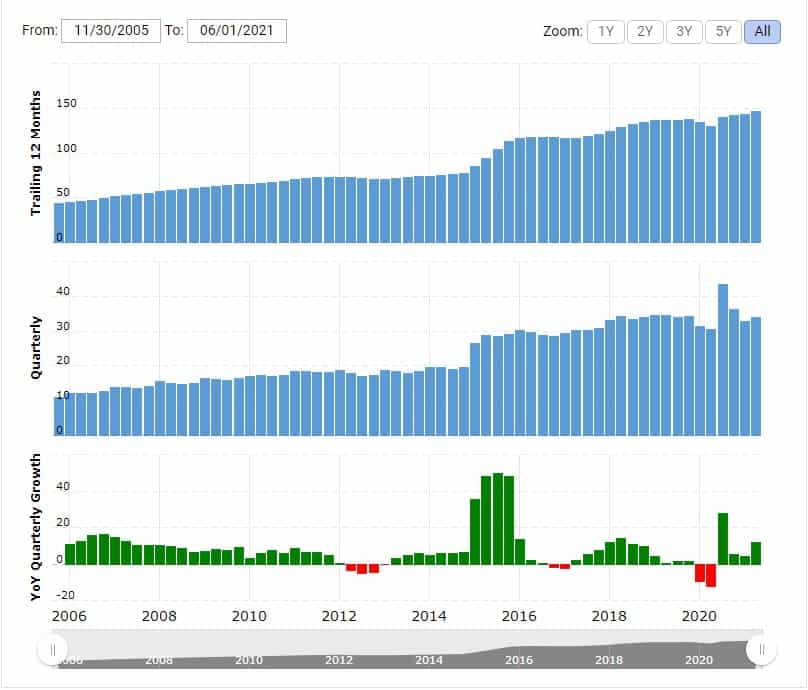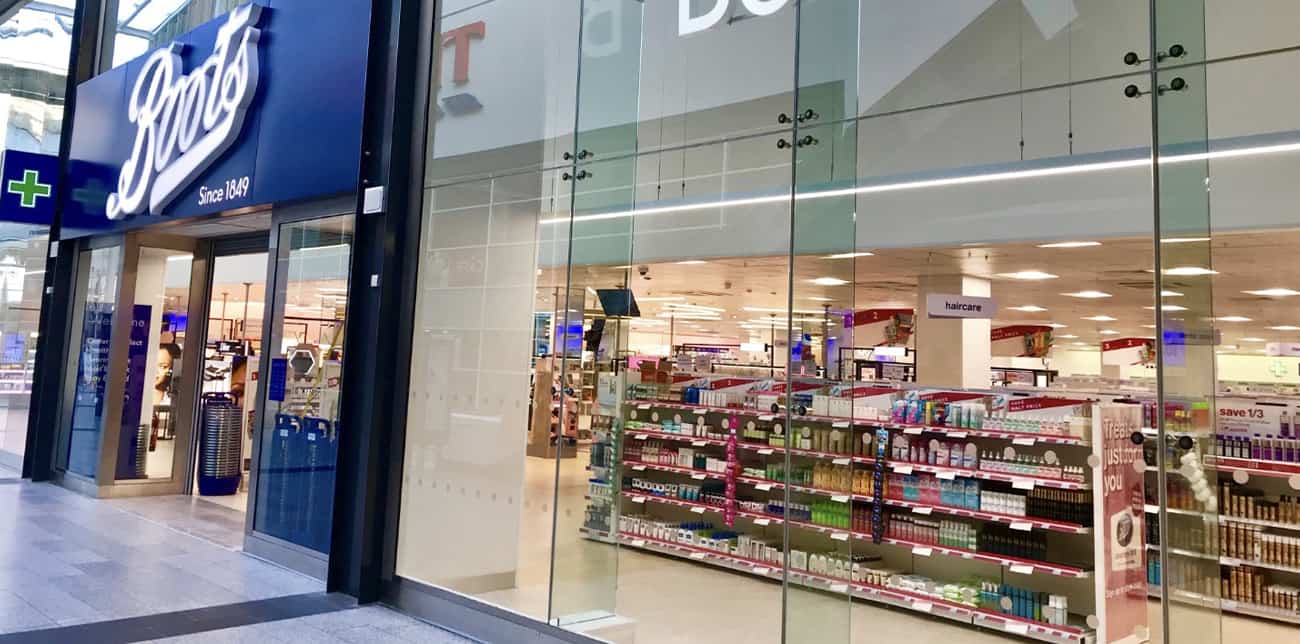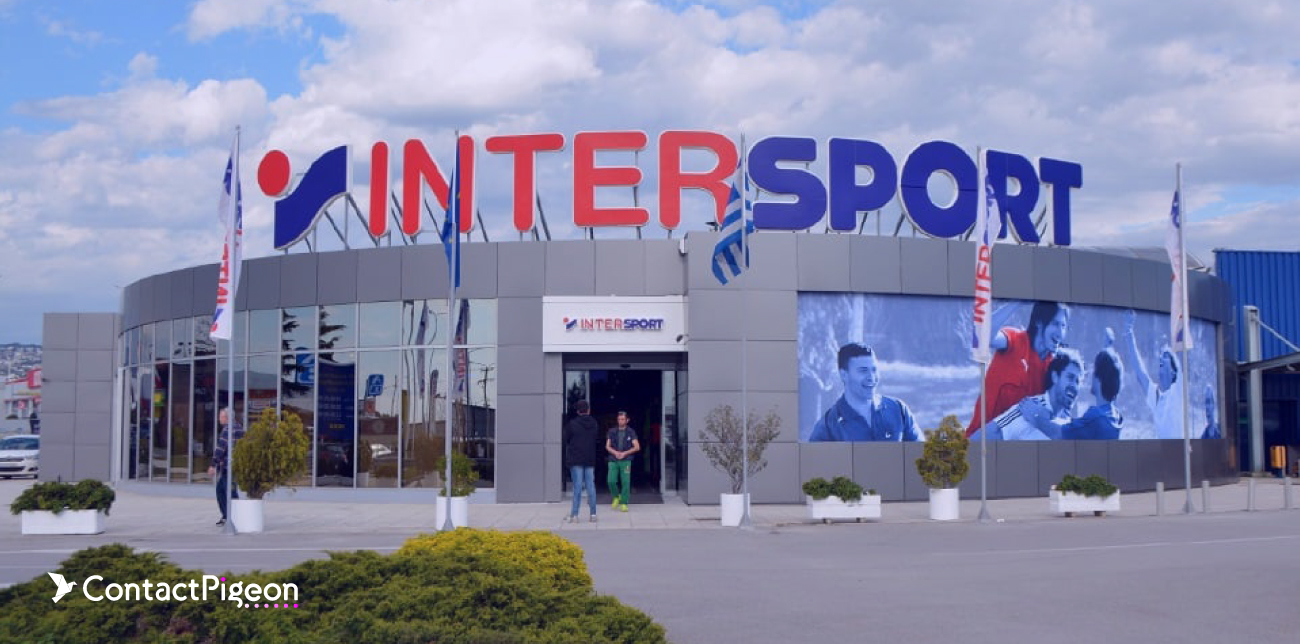Success stories about famous or noteworthy brands, like LEGO, IKEA, New Look, Screwfix, or Farfetch, can provide valuable information to retailers and marketers alike. A collection of case studies that consists of tried-and-true, successful marketing strategies creates a roadmap for recreation and implementation. eCommerce marketers can obtain useful data and inspiration through extensive research on retail experts such as Boots, a brand that has survived the test of time for 172 years. At ContactPigeon, we love analyzing top retailers and brands so today we will continue our journey with the UK’s ninth-biggest retailer by revenue. Therefore, this case study is dedicated to the impressive Boots marketing strategy and describes how a small family business became a leading UK pharmacy retailer.
Boots UK Limited (formerly known as Boots the Chemists) is a British health, beauty, and pharmacy chain founded in 1849. Currently, the company has expanded in various territories like Ireland, Italy, Norway, the Netherlands, Thailand, and Indonesia. Boots employs 52,000 team members of which 4,300 are registered pharmacists and 85.5% of the UK residents are a 10-minute walk away from a Boots store. The brand proudly counts 2,336 physical stores, 550 Boots Opticians practices, and 533 Boots Hearingcare locations.
Table of Contents
- > History of the Boots brand
- > Boots distinctions and awards
- > The tactics that drove Boots’ growth strategy to success
- > 3 times when the Boots’ omnichannel marketing strategy improved customer experience in pharmacy retail
- > Boots’ eCommerce strategy
- > Interesting eCommerce software & services that Boots uses
- > These Boots are made for winnin’.
History of the Boots brand
John Boot founded the company in 1849, in Nottingham. After his passing in 1860, his wife took over the family’s herbal medicine shop, with the help of her 10-year-old son, Jesse. When Jesse became of age in 1877, he began to formulate the name of Boots and expand the business by relocating the original tiny herbal shop and making it “the talk of the town”. Later on, he opened additional branches in distinct locations, like Sheffield and Lincoln.
Meeting his wife Florence Anne, a Jersey businesswoman and philanthropist was a very significant touchpoint in Jesse’s life and the development of their little “empire”. Together, they diversified into various sectors, like perfumery, photography, or education. A brilliant example was Florence’s idea to include a lending library department in different Boots branches, named the Boots Book-Lover’s Library, a tradition that carried on for 68 years (1898 – 1966).
By the time the first World War started, the company had 560 branches, and Jesse was asked to offer his services to the government. The company’s invaluable contribution included the massive production of first aid chemicals and the provision of unlimited supplies to the front line. In 1920, Jesse’s poor health forced him to sell Boots to the American United Drug Company and became a huge benefactor to the community, by making generous donations to institutions. A decade later, with the grandson of John Boot at the head of the company, the brand returns to the household name in 1933. John, Jesse’s son, with his leadership actively shaped further the image of the pharmacy retailer; by introducing a lot of new products, the famous Boots No7 range included, he turned the enterprise into a major national brand.
Last but not least, in the ‘60s, the pharmacy retailer expanded its endeavors furthermore, to pharmaceutical research and manufacture, with John Nicholson and Dr. Sir Stewart Sanders Adams inventing the Ibuprofen painkiller. Recent events led to a big merger between Boots and the European wholesale and pharmacy retailer Alliance UniChem, with executive chairman Stefano Pessina taking the company private and currently, being the largest single shareholder. Eventually, in 2014 Boots became a subsidiary to the Walgreens Boots Alliance company.
Boots distinctions and awards
The UK pharmacy retailer has been a vital member of the industry and this is visible through impressive distinctions from esteemed institutions. Additionally, it is important to mention that Stefano Pessina, a healthcare entrepreneur and visionary investor, since acquiring the company, has been offered numerous awards for his innovation and contribution.
- Beauty Retailer of the Year – The Sunday Times Style Beauty Awards 2021
- Best Bath/Body Range Award for the Soap&Glory range – The Sunday Times Style Beauty Awards 2021
- WBA Co-COO Ornella Barra was highly Commended for Responsible Business Leadership in The Reuters Events Responsible Business Awards 2020
- Innovation in Healthcare – Most Valuable Product (MPV) Awards 2019
- Global Leadership Award – The United Nations Foundation 2016
The tactics that drove Boots’ growth strategy to success

To pinpoint the main success factors that drive Boot’s growth, we decided to take a closer look at the aspects that continuously make a strong impact on the brand’s positioning, reputation, and, eventually, balance sheets
Boots Advantage Card
As of August 2020, to no surprise, the company counts 10.2 million active members in its loyalty card program, of which around 90% are women. New and old members have the opportunity to collect 4 points for every £1 spent, receive personalized recommendations through the Boots app and enjoy special rewards. The retailer combines brilliantly the app with the best point-based system loyalty program, creating a successful and lucrative omnichannel strategy.
In-house brands
From the moment Jesse’s son took over the family business, the manufacturing of in-house products has made a significant impact on the company’s growth, defining its image and positioning. The digital age required a more modern approach and Boots could not omit its iconic in-house brands from its eCommerce strategy, creating a mobile-optimized website. To name a few, the retailer has a long list of brands, including No7, Boots Brand Healthcare, Boots Soltan, Botanics, YourGoodSkin, Sleek MakeUP, and Soap & Glory. Boot’s private labels offer a remarkably high-profit margin for the corporation, making this an essential strategy for the retail industry.
Corporate Social Responsibility
Boots and the company’s stakeholders work tirelessly to prove their worth and maintain their household name by setting an example for the retail industry. Their responsible business practices are the cornerstone of their sustainable strategy, taking up crucial points like youth unemployment, climate change, and the unsustainable exploitation of natural resources. The CSR model is based on four key elements: Community, Environment, Marketplace, and Workplace.
Cruelty-Free, Vegan, and Sustainable Products
The known pharmacy retailer, in an attempt to end malevolent practices in the global pharmaceutical industry, has confirmed the manufacturing of truly cruelty-free products. The company is against testing finished products or ingredients on animals, with their suppliers or any third parties following the same principles. Moreover, in January 2020, a new Boots brand named Botanical was approved under the Cruelty-Free International Leaping Bunny program.
Regarding Vegan products, the company has incorporated a special filter in their product page, categorizing the items that do not contain any animal-derived ingredients. Lastly, the brand’s sustainability guidelines are explicitly stated on the company website and, similarly, plastic-free, recyclable, or reused items have special filters for easy identification and access.
Boots’ important contribution during the pandemic
Just like in WWI when Jesse Boot was asked to aid his community, the Coronavirus pandemic was another call-to-arms for the company. Boots, once again, rose to the occasion and offered its services to support the NHS. Taking on the responsibility to vaccinate the nation, Halifax was the first pharmacy to launch the vaccination process, with more locations to follow.
3 times when the Boots’ omnichannel marketing strategy improved customer experience in pharmacy retail
Example #1: Boots’ in-store apps and the collaboration with IBM and Apple
The retailer’s journey to the omnichannel promised land started in 2016 with a very interesting partnership that aimed to redefine their customers’ in-store experience. Boots, wishing to enhance its visitors’ shopping interactions, launched a MobileFirst iOS app, the Sales Assist, with the unique signature of IBM and Apple. Running in the majority of the Boots physical estate on in-store iPads, trained employees tap into the brand’s inventory and access valuable information about their customers’ favorite products.
On the one hand, consumers can have answers to their every question, including reviews, ratings, availability, next-day delivery, or shipping preferences. On the other hand, Boots representatives are always aware of each product’s data, including the tracking of out-of-stock, in-store items to other locations. Additionally, employees have the chance to recommend personalized products, based on each customer’s need and profile, creating meaningful connections between the brand and its audience.
Example #2: WBA’s partnership with Adobe and Microsoft for personalized interactions
Walgreens Boots Alliance, Boots’ parent company, worked together with Adobe and Microsoft to alter the pharmacy shopping experience during the pandemic, a time when digitalization was most needed. The three brands collaborated closely and redesigned pharmacy retail practices, bringing to life a personalized omnichannel approach through a global, digital transformation.
This approach consists of product recommendations based on past behavior, reminders on products that need to be replenished, or adding delivery options. The endgame was the implementation of a completely digital, touchless, and personalized link between Boots and its loyal customers. The pandemic brought public health to the forefront and pharmacies as essential retailers were the avant-garde of that battle. WBA, with 120 million customers all around the globe, conceived and realized seamless, confidential services that improved the brand’s customer engagement, blazing a trail in the healthcare industry.
Example #3: Boots virtual beauty consultations
Besides pharmaceuticals, Boots is known for its beauty products and its followers know all about them after so many years. Covid-19 and social distancing opened the floodgates of online shopping for non-essential purchases and all kinds of virtual gatherings, leading Boots to take advantage of the teleconference meetings.
The retailer launched a series of virtual beauty consultation services for their dear customers offering free advice with regard to make-up, beauty treatments, skincare, self-care, and many more. Consumers can easily book a free online appointment through the company’s website and attend the premium beauty masterclasses from the comfort of their homes. Taking advantage of the capabilities that technology provides, places Boots among the top omnichannel marketing examples.
Boots’ eCommerce strategy
We analyzed 4 pages as templates of the Boots website to identify eCommerce best practices and mistakes you should avoid.
A. Analyzing Boots’ Home Page

What we liked:
- Visually engaging: Bright and happy colors are always a good idea to get your visitors’ attention. The company highlights its summer offers in a funky way, using color-blocking techniques that are hard to ignore.
- Easy-to-find search bar: For those not really interested in browsing but know what they are looking for, the website’s developers created an easily recognizable search bar that stands out.
- Distinct drop-down menu: eCommerce has its own rules, and showcasing your strong cards on your home page is one of them. Boots with a noticeable and detailed drop-down menu makes navigation effortless for its users.
- Responsive design: Mobile optimization is a must these days. Luckily, Boots ensured the same finesse in all devices, making their home page’s user interface as smooth as ever.
- “Advice” Menu section: The company shows its customer-centric mentality by dedicating a whole section in the main navigation menu specifically for their content. This indicates how important it is for the brand to deliver value to its visitors, apart from selling products.
What we didn’t:
- An imbalance between categories: Besides being a beauty retailer, Boots is also a healthcare provider. Unfortunately, their home page is more focused on the first element and less on the second; placing their CTAs about healthcare at the bottom side of their home page can potentially alienate customers that are more interested in this aspect.

B. Analyzing Boots’ Category Page

What we liked:
- Sophisticated Faceted Navigation: Depending on the category, the Boots IT department included specific filters according to the characteristics of each product group. This shows how carefully designed the category page was, providing a seamless online experience.
- Sticky cart: Having access and visibility on your shopping cart is one of the most important perks of eCommerce. Consumers have access to their in-cart products with a very classy distinction between products and prescriptions. This subtle feature emphasizes the brand’s identity not only as a retailer but as a pharmacy specialist.
- Consistent and high definition product images: Images are a powerful tool and an important source of information. With that in mind, the company placed carefully selected images of their products, creating a slick environment.
- Virtual Customer Assistant: AIs are the future and using a virtual assistant can prove a very beneficial technique for your website. The chatbot encourages customers to interact with it if they need assistance, reminding them at the same time that it does not require their personal information. Safe transactions are paramount for the visitors’ journey, and Boots came through once again.
What we didn’t:
- No quick-view functionality: Granted, omitting the quick-view function is not such a tremendous mistake. Although, not having to open multiple tabs to get a closer look at your desired products is always a welcome addition.
- Lack of more sticky elements: A pretty good suggestion for the header or the facets/filters would be to include more sticky components; this idea would improve both the User Experience and the branding overall.
C. Analyzing Boots’ Product Page

What we liked:
- Minimal interface: Less is more and sometimes a minimalistic design is needed. Boots went big with their extravagant home page but managed to keep it simple and targeted in the rest of their website.
- Product details and delivery options: A retail giant such as Boots could not fall short on that, and provided these vital sections in their successful product page. Both pieces of information are well-written and specific, leaving nothing to chance.
- Collection of points: A brand with 10 million active users in its loyalty program is a force to be reckoned with and Boots is aware of that. The Boots Advantage Card members are surely interested in knowing how many points their purchases are worth, and luckily, now they know.
- Upselling with product bundles: Boots uses an interesting widget on the product page template promoting product bundles, which is a very resourceful idea to increase Average Order Value (AoV).
What we didn’t:
- No customer reviews on some items: Customer testimonials are essential in the digital world, as they provide proof of concept. Although the website has the aforementioned component on its product page, it is worth mentioning that some products do not contain any reviews at all.
D. Analyzing Boots’ Checkout Process

What we liked:
- Guest checkout: eCommerce checkout best practices 101; completing your purchases as a guest is a classic marketing strategy that could not be missing from the Boots website.
- Paypal payment option: Paypal is one of the safest and most common e-wallets nowadays, ensuring easy and fast transactions.
- Boots Advantage Card payment: Allowing loyal customers to pay with points is a really nice touch to increase revenue. This tactic incentivizes customers to make frequent purchases and stock points for the future.
- International shipping: A global brand by default has to ensure international deliveries for its visitors abroad and Boots is ticking all the boxes.
- Offer available feature: The checkout page displays a relevant message in red when an offer runs for a specific product. This feature is a brilliant way to increase profits by encouraging the user to raise the quantity and therefore get the offer.
- Popular – Live Notifications functionality: This interesting detail triggers live notifications about the selected items, providing validation and creating scarcity over popular products.
What we didn’t:
- More trust marks, more validation: Maybe the Checkout Page template could include more trust badges and more copywriting about security; focusing on safety issues and the company’s return policy reduces the customers’ fear, inspires their trust, and ensures their conversion.
- Personalized cross-selling products missing: To further boost the AoV, the brand could include behavioral-triggered personalized product recommendations on the checkout page.
- Exit-intent Pop-up: An exit-intent pop-up on the checkout process is a global eCommerce best practice that, on average, can increase conversions by ~1-2%.
Interesting eCommerce software & services that Boots uses
Using the buildwith tool we scanned the giant’s UK website and we highlighted the most impressive technologies spotted.
- Coremetrics: Coremetrics is a provider of digital marketing optimization and web analytics solutions that specializes in online marketing investments.
- TeaLeaf: Powerful tool for capturing, analyzing, and replaying customer on-site sessions in order to identify errors or issues that can potentially harm the website’s transactions.
- Hotjar: A platform with screen recording and heatmaps tools, Hotjar is a known brand dedicated to user behavior.
- Omniture SiteCatalyst: Adobe’s subsidiary, SiteCatalyst provides detailed web and mobile analytics, tracking visitors and conversions.
Other interesting eCommerce tools that are worth mentioning, are the ones used by Sainsbury’s, like the Pay@Browse and Just Walk Out.
These Boots are made for winnin’.
Boots’ success was not an accidental event but the result of a consistent, passionate, and exceptionally executed business & marketing strategy, with a spot-on online replication. The Boots omnichannel strategy has placed the company in the pantheon of the pharmacy retail industry, but there is always room for further growth and optimization.
Embedding more omnichannel technologies can help the retailer deliver a more personalized and unified customer experience. Teaming up with a reliable customer engagement and marketing automation partner could significantly improve the brand’s customer retention and customer lifetime value (CLV).
Worldwide there are only a few solutions built for the retail industry and luckily we are one of them. ContactPigeon’s platform, with its advanced, customizable features, is the perfect introduction to the wonders of omnichannel marketing automation, and booking a free consultation can prove invaluable for your business.

Let’s Help You Scale Up
Spending time on Linkedin? Follow us and get notified of our thought-leadership content:



![Benchmarking Growth Strategies of Top Fashion Retailers [Study]](https://blog.contactpigeon.com/wp-content/uploads/2025/11/top-fashion-retailers.jpg)
